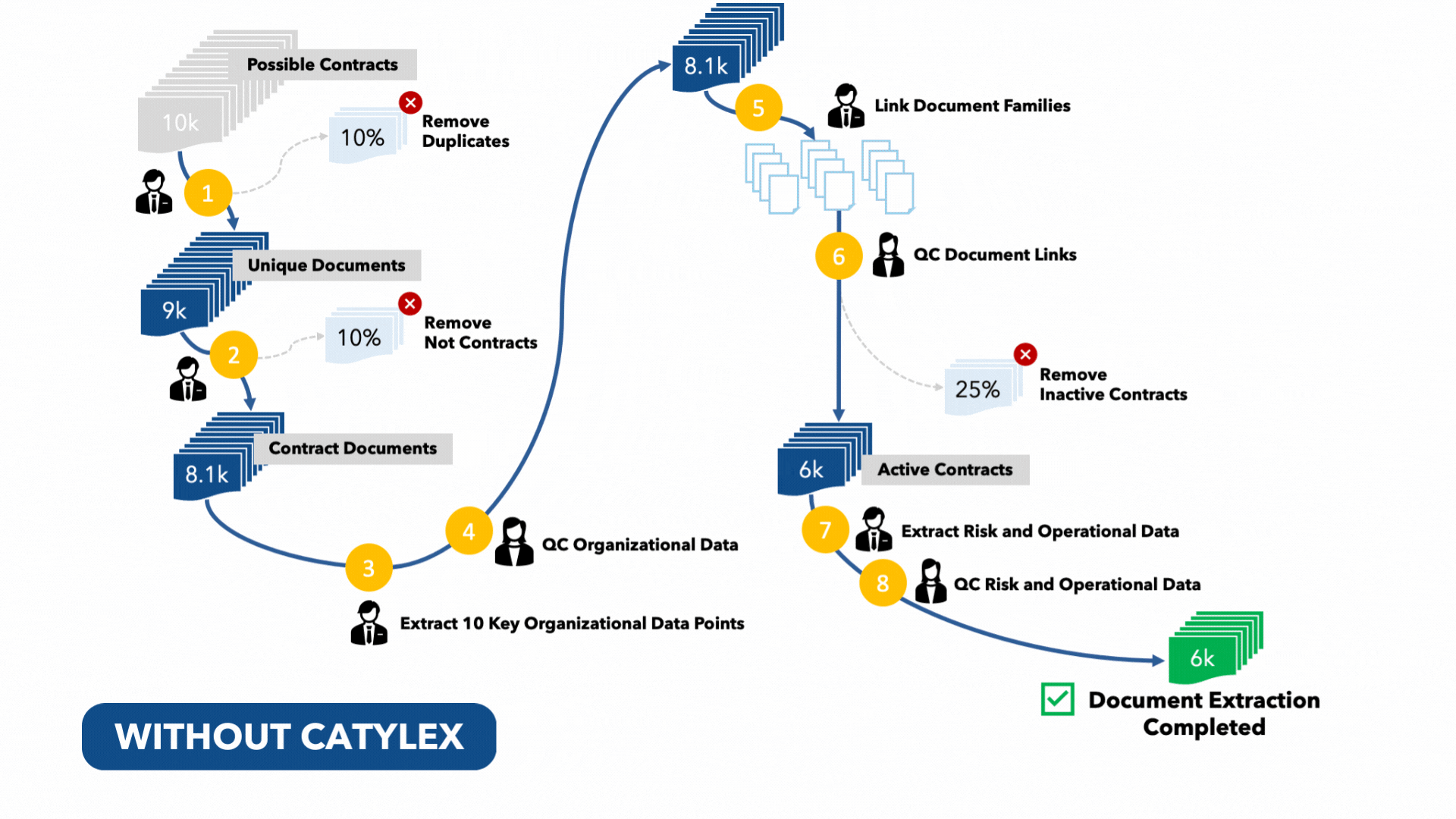How to Defeat the Contract Data Monster and Increase ROI
Transforming thousands of contracts into data to get answers can be terrifying, but it doesn't have to be.
Most business have thousands, tens of thousands or even hundreds of thousands of contracts. While the size of the portfolio varies from organization to organization, every business has a threshold where the manual contract review process becomes a terrifying monster due to its complexity and its reliance on humans. In fact, contract review at scale often seems so daunting that many businesses skip it entirely.
If you need to load a CLM, answer a regulatory request, conduct pre-acquisition diligence, or complete a post-acquisition integration, data extraction is unavoidable. You will need to transform masses of contracts into data to get answers. Depending on the circumstances, you may not have the luxury of time.
So, let’s break down what actually needs to be done to get quality insights from a portfolio of contracts. How do we slay the beast?
Contract Data Extraction: Step-by-Step
Every project starts by gathering all documents pertaining to the project in one place. Your documents may have already been digitized (it’s 2024 after all) and collected from messy G-Drives, sales email attachments, old SharePoint sites, etc. allowing you to skip this initial step. But, even if you have an existing legacy repository, it’s likely that there will be both duplicates and documents that are not contracts to address before moving forward.
The number of duplicates you have depends on previous efforts to maintain your repository. Removing duplicates now means less time spent on extraction later and minimizes the risk of misleading data influencing your analysis.
Next, you’ll want to eliminate any documents that are not contracts. Back in my law firm days, I once heard a story, likely apocryphal, of some poor associate who left a dry-cleaning receipt in a pile of documents. The receipt was scanned into Edgar and forever captured in posterity. Moral of the story: don’t be surprised by what you find in your repository or network drive. Removing any document that is not a contract is important because every additional page that someone needs to review (even if it ends up being completely irrelevant) adds to the overall project cost.
Once you’ve isolated your contract documents you might think you’re ready to move into risk and operational data extraction, but there is a catch: not all these contracts are active! Often the business situation does not require delving into expired contracts. By eliminating inactive, out-of-scope contracts, you can significantly reduce the scope of what you’ll need to dig through.
So, how do you know which ones are inactive? Do you look at the expiration date? Many contracts don’t have an explicit expiration date. Even if they do, how do you know if it has been amended? Are there any related termination notices? Has a renewal option been exercised?
The effort required to extract this basic organizational data and determine whether it's relevant typically requires looking at all the contracts. Until the contract and any related amendments, notices etc. are compiled into contract families, it’s not possible to identify which ones are currently active.
With a fully manual approach that relies entirely on humans to do the work, it takes dozens of hours of drudgery before you can even begin to extract the risk and operational data required to solve your business use case. All those hours start adding up and reducing your overall ROI. That’s why we think it’s worth considering another approach.
How Contract AI Improves ROI
Catylex Contract Analytics® is built not only to get the critical data out of contracts, but also to help get through the dross to the good stuff. It can be used for smaller data extraction projects, but it really shines when the volume of contracts and the granularity of data required makes the manual review approach untenable.
Let’s assume that you are starting with 10,000 files, and you are looking to find 15 risk and operational data points, things like automatic renewal terms, limitations on liability, governing law, payment terms, assignment restrictions, and the other usual suspects. After removing duplicates and narrowing your scope to the active contracts, you may have reduced the number of documents to review by several thousand with limited reliance on humans.
As dictated by the scope of the project, humans remain involved by reviewing organizational data, document links, and risk and operational data with QC (quality control) that is intuitive and optimized to support contract review at scale. At each point, Catylex’s AI-powered extraction can help you accomplish the work faster, and far cheaper with fewer scope tradeoffs – delivering incomparable ROI.
We’ve put together a ROI calculator that considers the complexity of this process and easily allows you to compare the cost of your project with and without a tool like Catylex. Use your own inputs and see for yourself the dollars and hours saved when using Catylex for data extraction projects. With a little help, it's possible to defeat the contract data monster.
